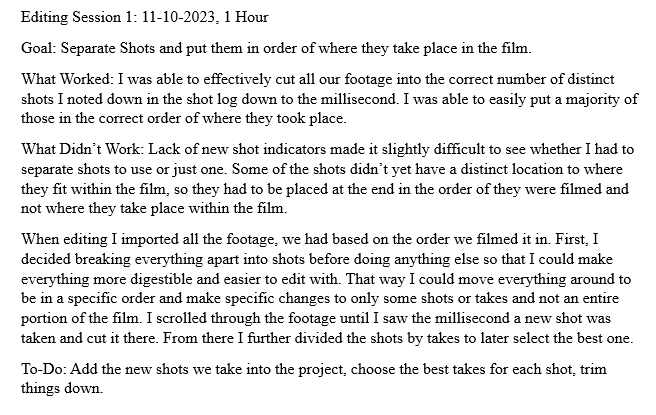Adding Transitions to the Film
After cutting down all of the shots we had it was time to add transitions. I didn't think much of this part initially as I saw as just a small aspect of editing a film together. I believed it was like a PowerPoint where it just gets you from one place to another.
The process was pretty simple as all I had to do was go the shots I trimmed and apply a transition to them. Then once I started, I saw it played a much larger component than I thought.
By itself, the film seemed awkward at some points where scenes follow each other but do so in an unsatisfying way. Giving these shots transitions that aren't straight cuts makes them flow way better in the film and makes the film feel less static as well. This was extra beneficial as the film had lots going on and making that feel boring or rushed would have detracted from the work we put in.
It also acted as a way to show time progression through the use of black outs to take viewers away from one shot and put them into another so that they can assume it isn't straight afterwards. Using fades, I was able to stack some facial expressions unit the next one fully came in to show a parallel in the characters and how the first opponent was now like the second.
During this process, I became aware of the importance of transitions in storytelling and a film's composition. Transitions weren't just the middle step in moving from shot to shot but instead the key component on how your film is told and perceived by the viewer. You can express how long an event took place to give a viewer a clearer idea of where they are at within the story or express changes within the story without having to change the setting or have dialogue. They also have the ability to break apart patterns within your film and stop your film from feeling stiff or stale which may happen when just using straight cuts or a lack of transitions. It makes the film more digestible for a viewer by making it easier to understand and look at. They fill in the voids between your shots that may seem disconnected when just played right after each other and add context to events like personality changes and shifts in time.



















